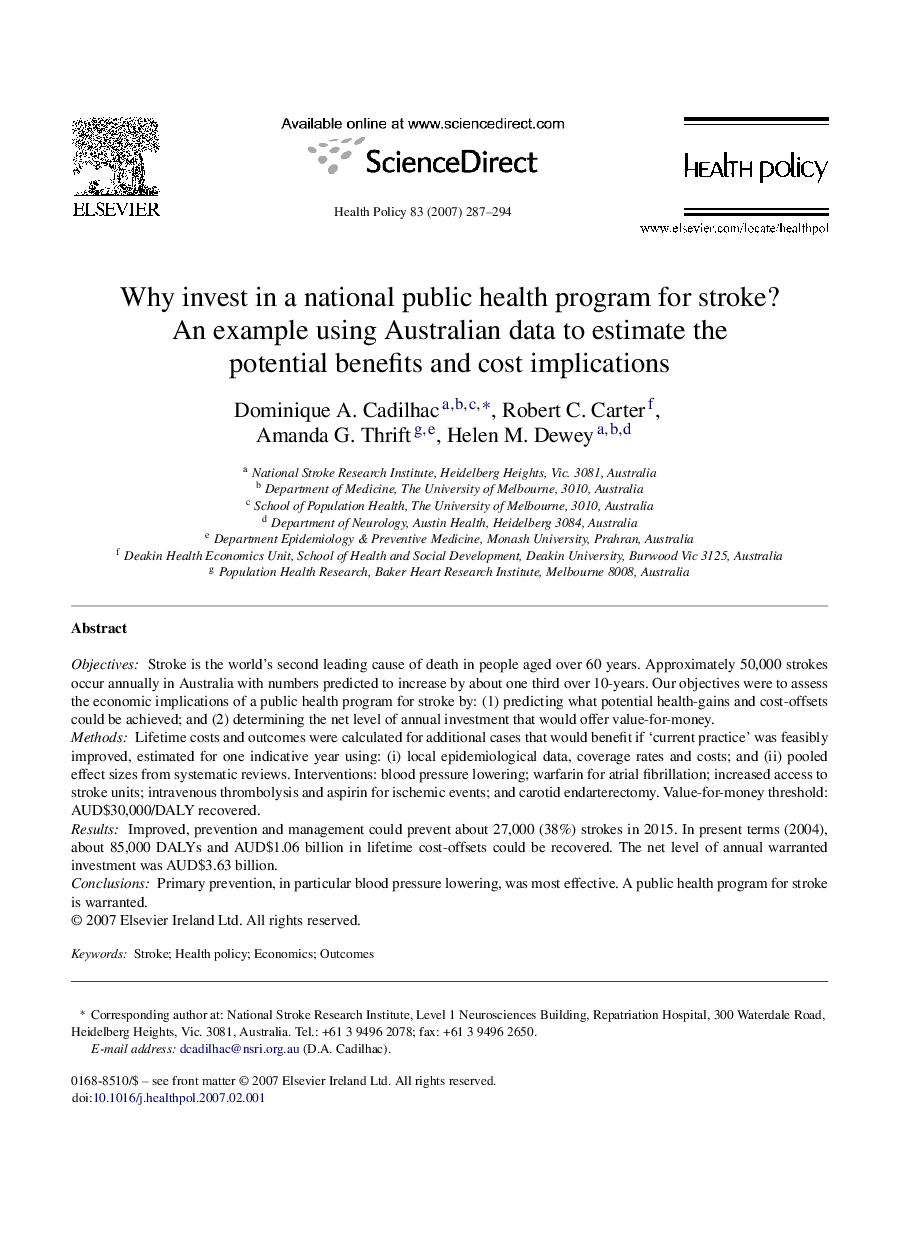| Article ID | Journal | Published Year | Pages | File Type |
|---|---|---|---|---|
| 4198951 | Health Policy | 2007 | 8 Pages |
ObjectivesStroke is the world's second leading cause of death in people aged over 60 years. Approximately 50,000 strokes occur annually in Australia with numbers predicted to increase by about one third over 10-years. Our objectives were to assess the economic implications of a public health program for stroke by: (1) predicting what potential health-gains and cost-offsets could be achieved; and (2) determining the net level of annual investment that would offer value-for-money.MethodsLifetime costs and outcomes were calculated for additional cases that would benefit if ‘current practice’ was feasibly improved, estimated for one indicative year using: (i) local epidemiological data, coverage rates and costs; and (ii) pooled effect sizes from systematic reviews. Interventions: blood pressure lowering; warfarin for atrial fibrillation; increased access to stroke units; intravenous thrombolysis and aspirin for ischemic events; and carotid endarterectomy. Value-for-money threshold: AUD$30,000/DALY recovered.ResultsImproved, prevention and management could prevent about 27,000 (38%) strokes in 2015. In present terms (2004), about 85,000 DALYs and AUD$1.06 billion in lifetime cost-offsets could be recovered. The net level of annual warranted investment was AUD$3.63 billion.ConclusionsPrimary prevention, in particular blood pressure lowering, was most effective. A public health program for stroke is warranted.
